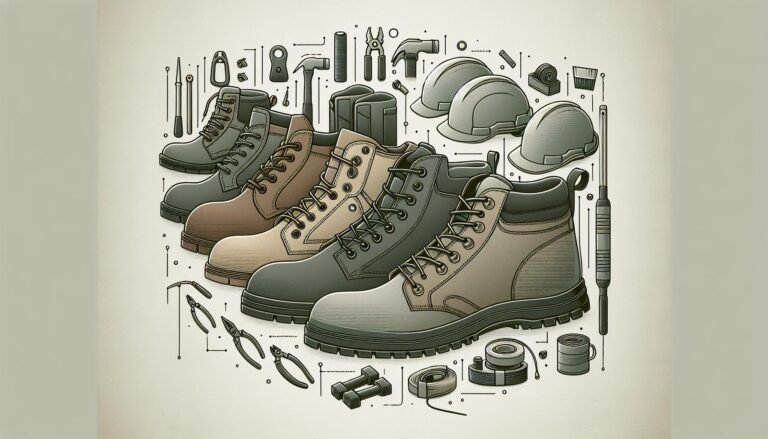What Kind of Shoes Did Pirates Actually Wear?
When imagining the swashbuckling life of pirates, most people picture eye patches, tricorn hats, and cutlasses. However, one often overlooked detail is their footwear. What kind of shoes did these notorious seafarers actually wear?
Pirates needed shoes that were both durable and practical for life on the high seas. Their footwear had to withstand harsh conditions, from slippery decks to rugged shorelines. This article dives into the types of shoes pirates wore, exploring their functionality and how they contributed to a pirate’s daily life.
Key Takeaways
- Durable and Practical Footwear: Pirates needed shoes that could withstand harsh conditions, such as slippery decks and rugged shorelines, making practicality and durability key features.
- Materials Used: Leather was the most common material for pirate shoes due to its robustness and water resistance. Other materials like wool and canvas were also used, particularly for warmth and flexibility.
- Functional Design: Pirate shoes often had thick soles for traction, high tops for ankle support, and features like buckles and reinforced toes for stability and protection during sea conditions.
- Historical and Geographic Variation: Pirate attire, including footwear, varied based on geographic location and time period, with different materials and styles used to adapt to local climates and contemporary fashion trends.
- Influence on Modern Fashion: Pirate footwear has influenced contemporary styles, particularly in the design of high-top boots and rugged aesthetics seen in modern fashion and outdoor gear.
- Popular Culture vs. Reality: While movies and books glamorize pirate footwear with elaborate designs, historical records indicate that most pirates wore simple, practical shoes or went barefoot to maintain agility on deck.
Historical Context of Pirate Attire
Geographic Influence on Pirate Clothing
Pirate attire varied significantly based on geographic location. In the Caribbean, lightweight and breathable fabrics were common. These materials helped combat the hot, humid climate. In contrast, pirates in colder regions like the North Atlantic wore heavier garments to stay warm. Leather and wool were frequently used materials for their durability and warmth. Additionally, access to local materials influenced clothing choices. Pirates often traded or plundered goods from merchant ships, acquiring diverse clothing items from various regions.
Time Period Variations
The era in which pirates operated also impacted their clothing style. During the Golden Age of Piracy (1650-1720), clothing followed the trends of contemporary maritime fashion. Early 17th-century pirates often wore loose shirts, breeches, and long coats, mirroring naval and merchant sailors’ attire. By the late 17th and early 18th centuries, pirate fashion evolved to include more elaborate garments like waistcoats and tricorne hats. Footwear adapted similarly, with early boots and shoes being replaced by more refined styles over time.
Characteristics of Pirate Footwear

Materials Used in Pirate Shoes
Pirate shoes were primarily made from durable materials. Leather was the most common choice due to its robustness and water resistance, making it suitable for harsh maritime conditions. In colder regions, pirates often wore shoes lined with wool, offering additional warmth. Another common material included canvas, which was lighter but still provided a degree of protection and flexibility. Boots, for instance, combined leather exteriors with wool or canvas interiors to balance durability with comfort.
Functional Design Features
Pirate footwear had several functional design elements. Shoes often featured thick soles, giving extra traction on wet and slippery decks. High tops were common, providing ankle support and preventing water from easily entering the shoe. Buckles and laces ensured a snug fit, crucial in maintaining stability during turbulent sea conditions. Some boots included reinforced toes, protecting feet during physical labor or combat. Additionally, ease of removal was considered, allowing pirates to quickly shed their shoes if they fell overboard. These practical features highlighted the necessity for pirate footwear to be both sturdy and adaptable.
Comparison with Modern Footwear Styles

Influence on Contemporary Fashion
Pirate footwear has influenced contemporary fashion, particularly in high-top and boot designs. Many modern boots, resembling pirate shoes, feature high tops that offer ankle support. Designers like Vivienne Westwood and Alexander McQueen have showcased pirate-inspired collections, presenting boots with buckles, thick soles, and rugged aesthetics. These elements echo the functional aspects of pirate shoes, adapting them for modern style sensibilities while maintaining a nod to historical designs.
Practicality in Modern Times
Modern equivalents of pirate shoes provide practicality, especially in outdoor and rugged environments. Boots with thick soles and high tops are favored for activities like hiking and construction. Enhanced materials, such as synthetic leathers and advanced textiles, improve durability and comfort, while retaining the key design features of pirate footwear. These advancements enable people to benefit from the historical strengths of pirate shoes, integrating them seamlessly into contemporary needs and lifestyles.
Pirate Footwear in Popular Culture

Portrayal in Movies and Books
Pirate footwear is often glamorized in films and literature. Characters such as Captain Jack Sparrow in the Pirates of the Caribbean series frequently wear knee-high boots, adorned with buckles and sometimes featuring thick soles. Similarly, in books like Treasure Island by Robert Louis Stevenson, pirates are depicted with rugged boots suitable for their adventurous lives. These representations focus more on aesthetics than historical accuracy, enhancing character appeal rather than factual detail.
Misconceptions and Facts
Several misconceptions surround pirate footwear. Many believe all pirates wore elaborate boots, yet historical records suggest otherwise. Pirates often wore practical shoes like simple leather shoes or barefoot to maintain agility on deck. Studies, including those by maritime historians, reveal that practicality outweighed style. While knee-high boots did exist, they were typically worn by officers or those who could afford them, not the average pirate. This practical approach aligned with the demanding maritime environment, where reliable, simple footwear was crucial.

Pirates’ footwear was more about practicality than style. They needed shoes that could withstand the harsh conditions at sea. This focus on durability influenced modern fashion and outdoor footwear. While popular culture often portrays pirates in elaborate boots, historical records show many opted for simple leather shoes or even went barefoot for better agility. The myth of extravagant pirate footwear is debunked by maritime historians who highlight the necessity of functional, reliable shoes for life on the high seas.
Frequently Asked Questions
Why did pirates need durable and versatile shoes?
Pirates required durable and versatile shoes due to the tough conditions at sea. Good footwear provided protection, stability, and comfort during long voyages, and was essential for safely maneuvering on slick and unstable ship decks.
How have pirate shoe designs influenced contemporary fashion?
Pirate shoe designs have significantly influenced contemporary fashion, with designers like Vivienne Westwood and Alexander McQueen incorporating pirate-inspired elements into their collections. These modern designs often reflect the rugged, adventurous spirit associated with pirates.
Are pirate-inspired shoes practical for modern activities like hiking?
Yes, the practicality of pirate-inspired shoes extends to modern activities like hiking. Many contemporary designs are durable, comfortable, and versatile, making them suitable for outdoor adventures and rugged terrains.
How is pirate footwear portrayed in popular culture?
In popular culture, pirate footwear is often depicted with an emphasis on aesthetics rather than historical accuracy. Movies and books typically show elaborately designed boots, which contrast with the simpler, more practical footwear that historical pirates actually wore.
What misconceptions about pirate footwear does the article address?
The article addresses several misconceptions, revealing that many pirates prioritized practicality over elaborate designs. Many opted for simple leather shoes or even went barefoot for better agility on deck, contrary to the myth of all pirates wearing elaborate boots.
Did all pirates wear elaborate boots?
No, not all pirates wore elaborate boots. Many pirates preferred simple leather shoes or went barefoot to maintain agility and practicality on the ship’s deck, aligning with historical records and maritime historians’ findings.






